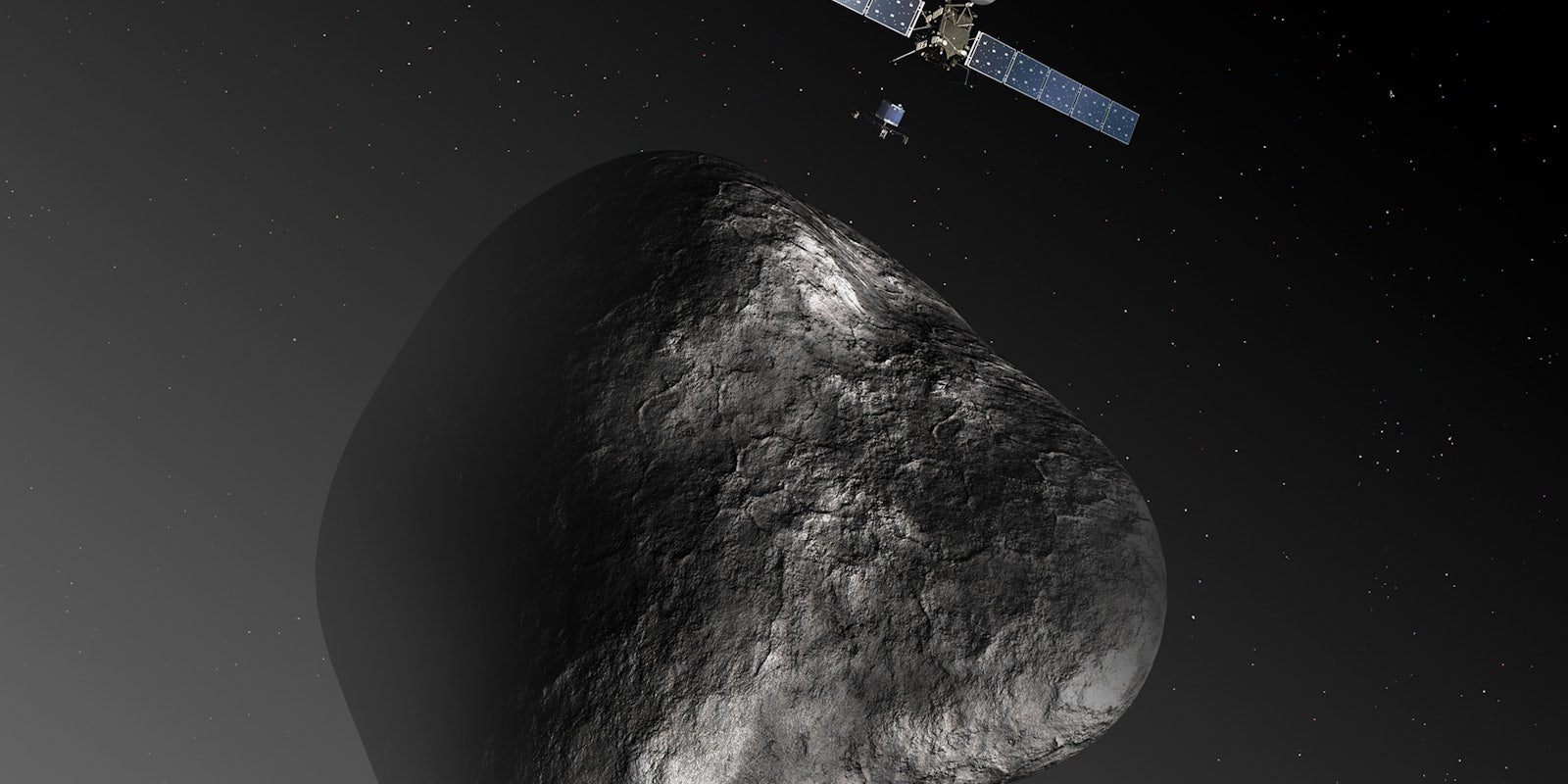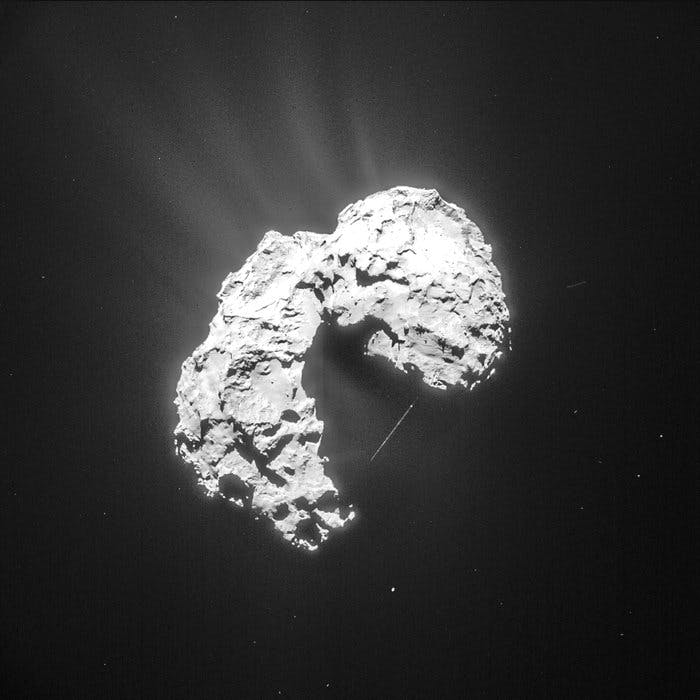The European Space Agency‘s Philae lander went into hibernation last November after successfully landing on Comet 67P/Churyumov-Gerasimenko. This week, the lander may get another chance to send a signal back to Earth.
The ESA’s Rosetta mission achieved its original goals by landing Philae on the comet and sending data—including amazing photos—back to Earth. However, Philae’s landing was bumpy, and the lander wound up in a shadowy area of the comet, making it difficult to harness power from the sun.
After just two days, the lander ran out of energy and shut down, with no guarantee that it would ever wake up again.
My #lifeonacomet has just begun @ESA_Rosetta. I’ll tell you more about my new home, comet #67P soon… zzzzz #CometLanding
— Philae Lander (@Philae2014) November 15, 2014
But that may be about to change.
Stephan Ulamec, Philae’s project manager at the German Aerospace Center, said on Tuesday that the lander is now receiving twice as much solar energy as it did when it went into hibernation last year. This means it has a much better chance of warming up to the -45 degrees Celsius (-49 Fahrenheit) required to awaken.
Since the temperature at Philae’s landing site is colder than the ESA had originally planned for, the lander is gradually trying to warm itself up. Once it reaches -45C and starts receiving more than 5.5 watts of power from the sun, it will switch on and attempt to contact the Rosetta craft, which is currently in orbit around the comet. The ESA explains:
“Between 12 and 20 March, the Rosetta orbiter is transmitting to the lander and listening for a response. The most likely time for contact is during the 11 flybys where the orbiter’s path puts it in a particularly favourable position with respect to the lander during comet ‘daytime’.”
If Philae manages to gather enough energy to communicate, its first task will be to send back information about its “health,” such as how much energy it’s receiving and whether the lander is damaged. After that, the ESA will use it to make further attempts to study the comet.
Photo via European Space Agency/Wikimedia Commons (CC BY-SA 3.0)



